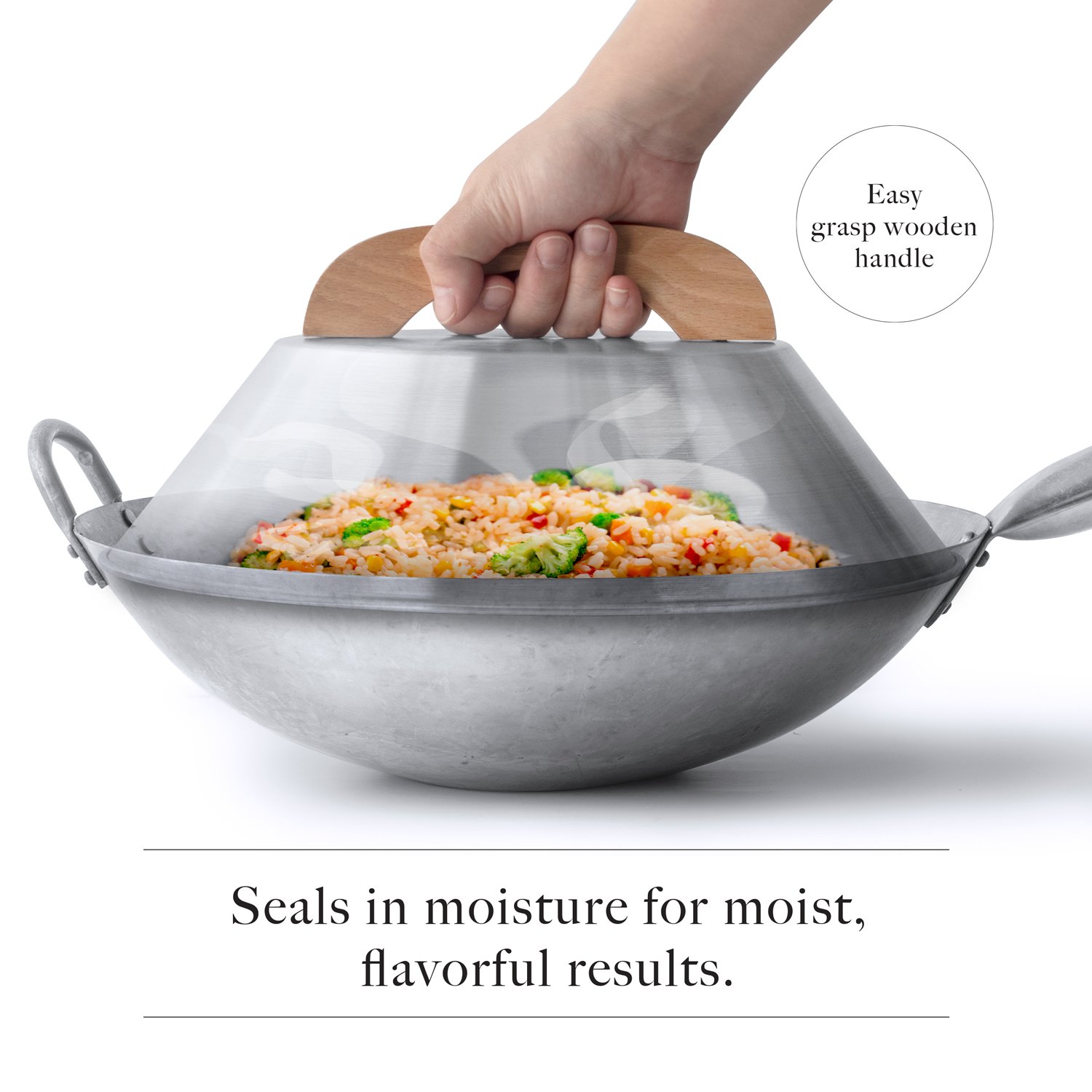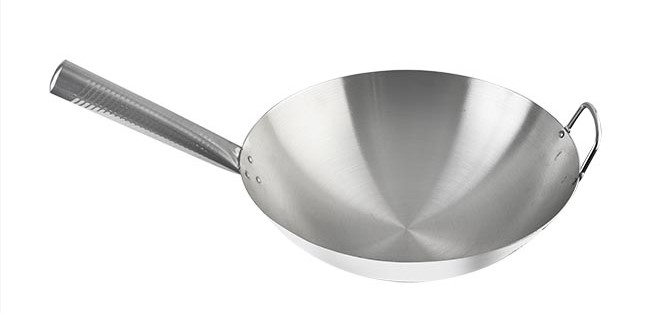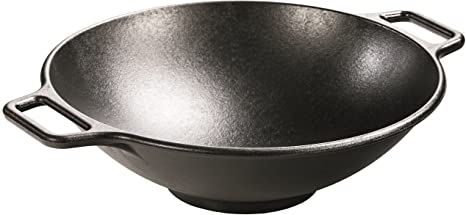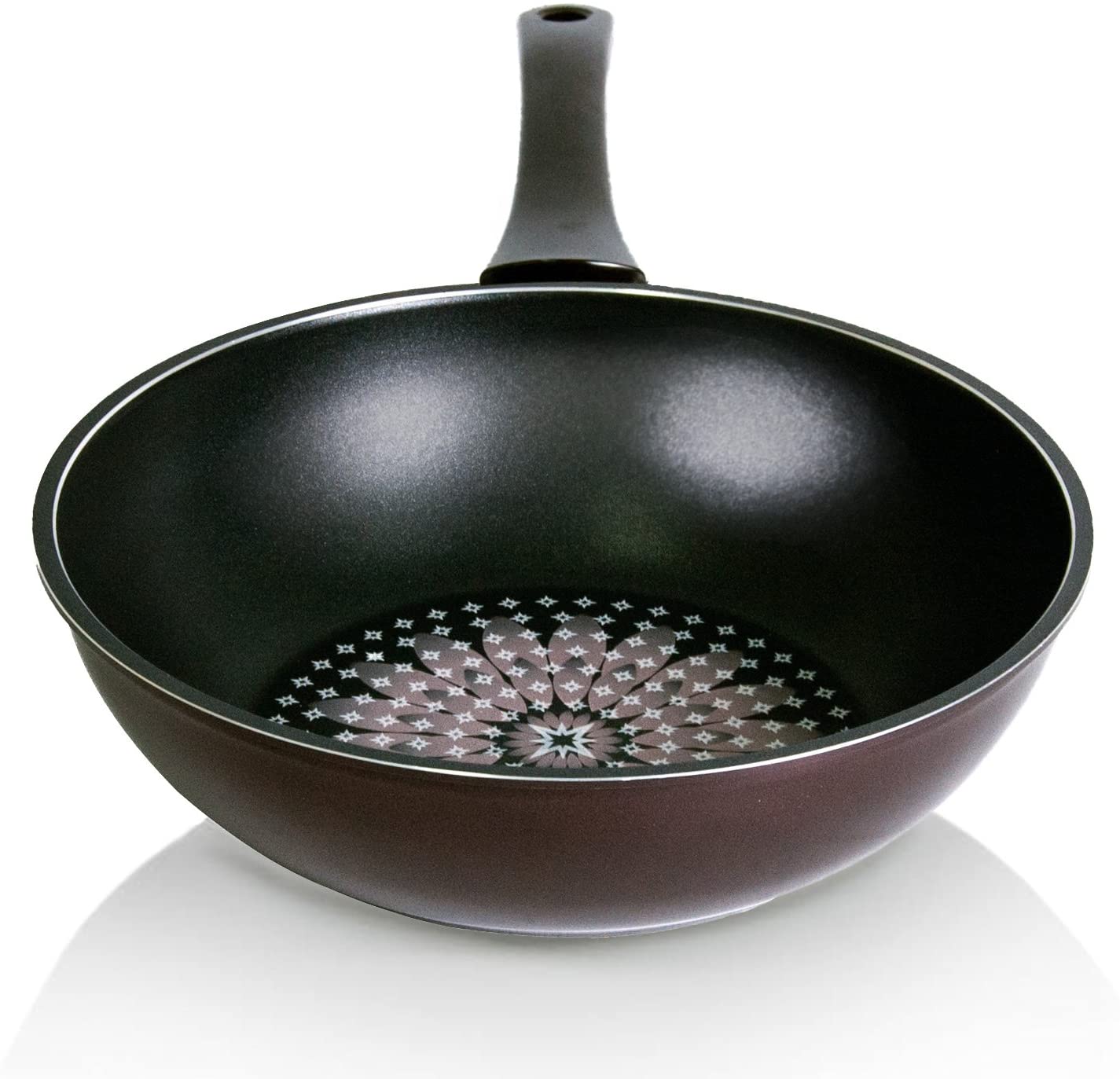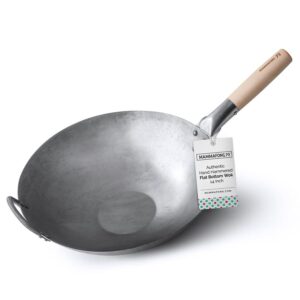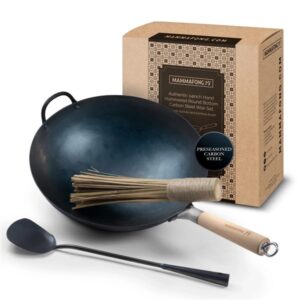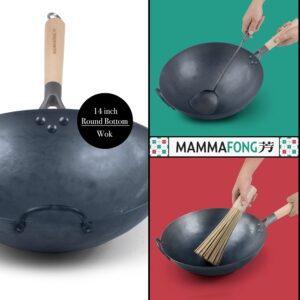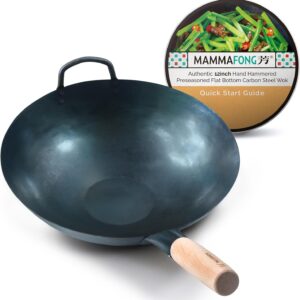How to choose a wok?
How to choose wok for your kitchen? – a short guide
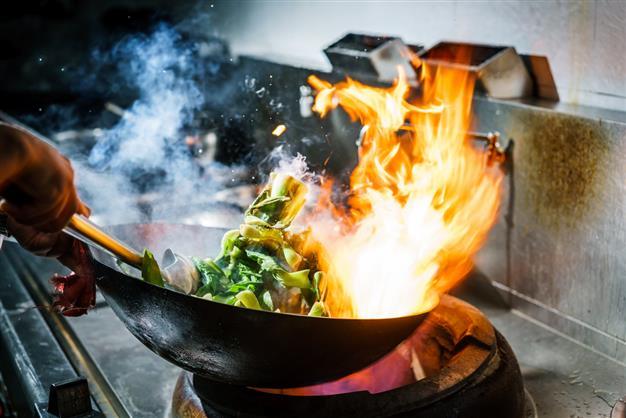
What kind of materials?
Woks are made of many materials, most of them have both advantages and disadvantages too. Here is a short guide for choosing the best for your kitchen!
Advice: BETTER avoid
Why? This is the antique way of making woks as iron was before steel. Better choice but not the best. It still takes a relatively long time to heat up and cool down, but it offers a better non-stick surface. The main problem with cast iron is that when it’s too thin, it is extremely fragile but when it’s when made thick enough to be durable, they are very heavy to lift, so no way you could do proper flipping during a stir-fry. Also, a cast iron wok could easily break your electric or inductive stove glass surface…
Material: mostly aluminium and teflon (or unknown non-stick) surface
Advice: STRONGLY avoid at all costs
Why? Most non-stick coatings cannot handle the high heat necessary for a proper stir-fry. They start vaporizing, releasing noxious fumes long before they reach the requisite temperature. They make browning difficult, and it’s impossible to get food to stick in place against the wok when you want to clear a surface to cook in the middle. Also, aluminium, or other low quality metal materials are not durable, perform weak in heat transmissions.
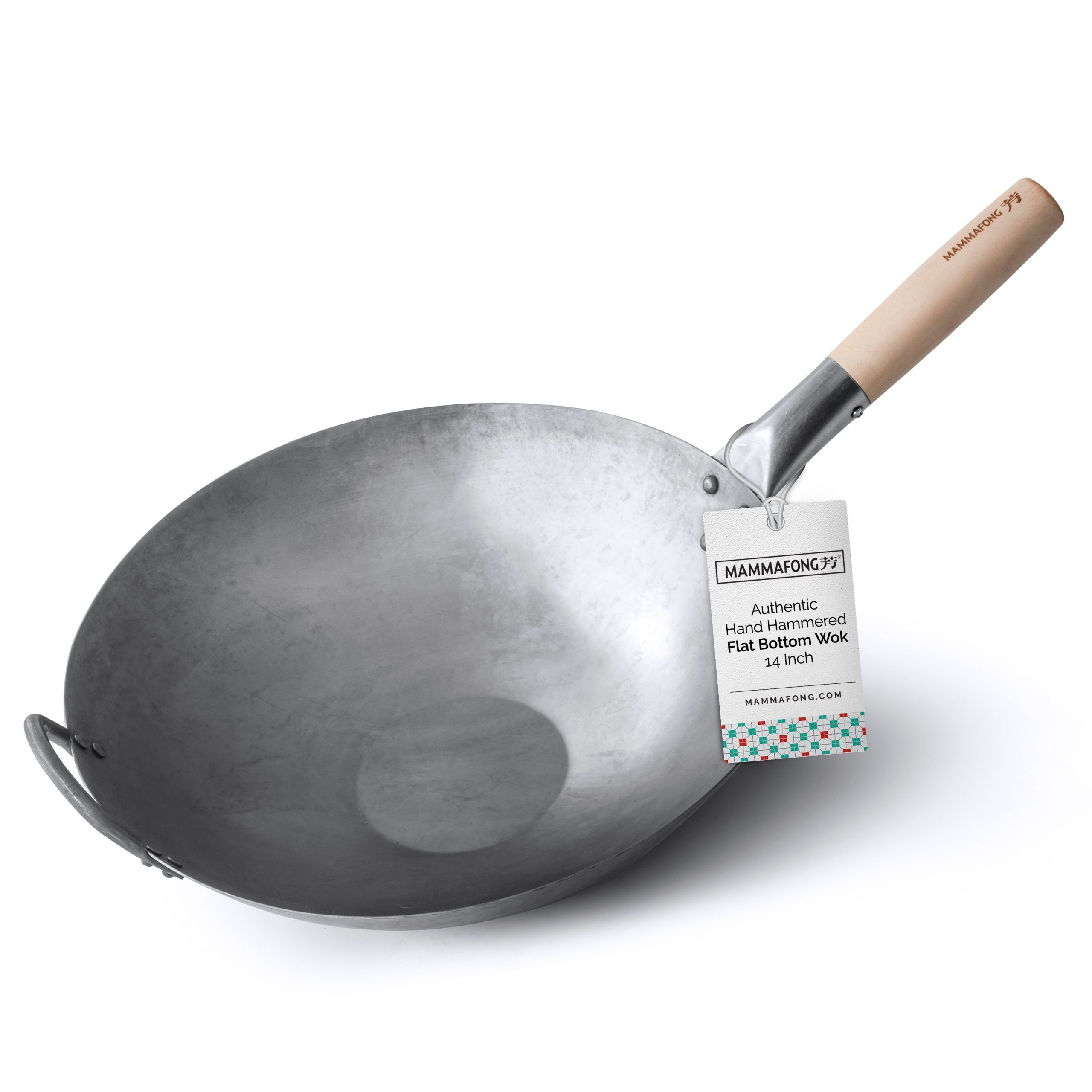
Advice: Best bet for your kitchen
Why? It heats quickly and evenly; it’s highly responsive to heat, it’s durable and you get very good value for your money. When properly cared for, it will end up with a practically non-stick surface. Look for carbon steel woks that are at least 14-gauge—about two millimetres thick. Which won’t bend when you press on the sides. Most of them are less than 1,5kg, so it’s easy to wield. Most of all, it’s very durable and you can make basic maintenance of the non-stick surface at home condition!
Flat or Round bottom?
Do not follow our mate, who ordered a round bottom wok for his electric stove! Beware: There are 2 types of bottom’s shape: round and flat. The whole idea is about moving foods in and out of heating zone. First lesson: the wok hottest part is the bottom 😊 If your wok has a wide flat bottom, it is difficult to move food in and out with flipping the wok, the ingredients are mostly within the hottest part. On the other hand, round bottom woks do not fit to electrical or induction stoves… So, our hint is
Electric and induction stoves: choose flat bottom. The best flat bottom woks have around 10cm (4 inches) flattened area at the bottom, with gently sloping sides that flare out to between 30 (12inches) and 35 centimetres (14 inches). This will give you plenty of high-heat space for searing meats and vegetables at the bottom, while still providing ample volume and room to manoeuvre when flipping.
Gas stoves: choose round or flat bottom (see above). If you choose round bottom, it is better to buy a ring rack, which ensures a stable sit of your wok.
Woks with bottoms that are too flat defeat the purpose of a wok, making it tough to flip properly and to move food in and out of the high-heat zone.
What size?
The most common wok size is around 35 centimetres (14 inches). This fits for family jobs very well, even up to 7-8 person. For one or two we recommend 30 centimetres (12 inches) woks. The most important aspect here is economical, so choose accordingly.
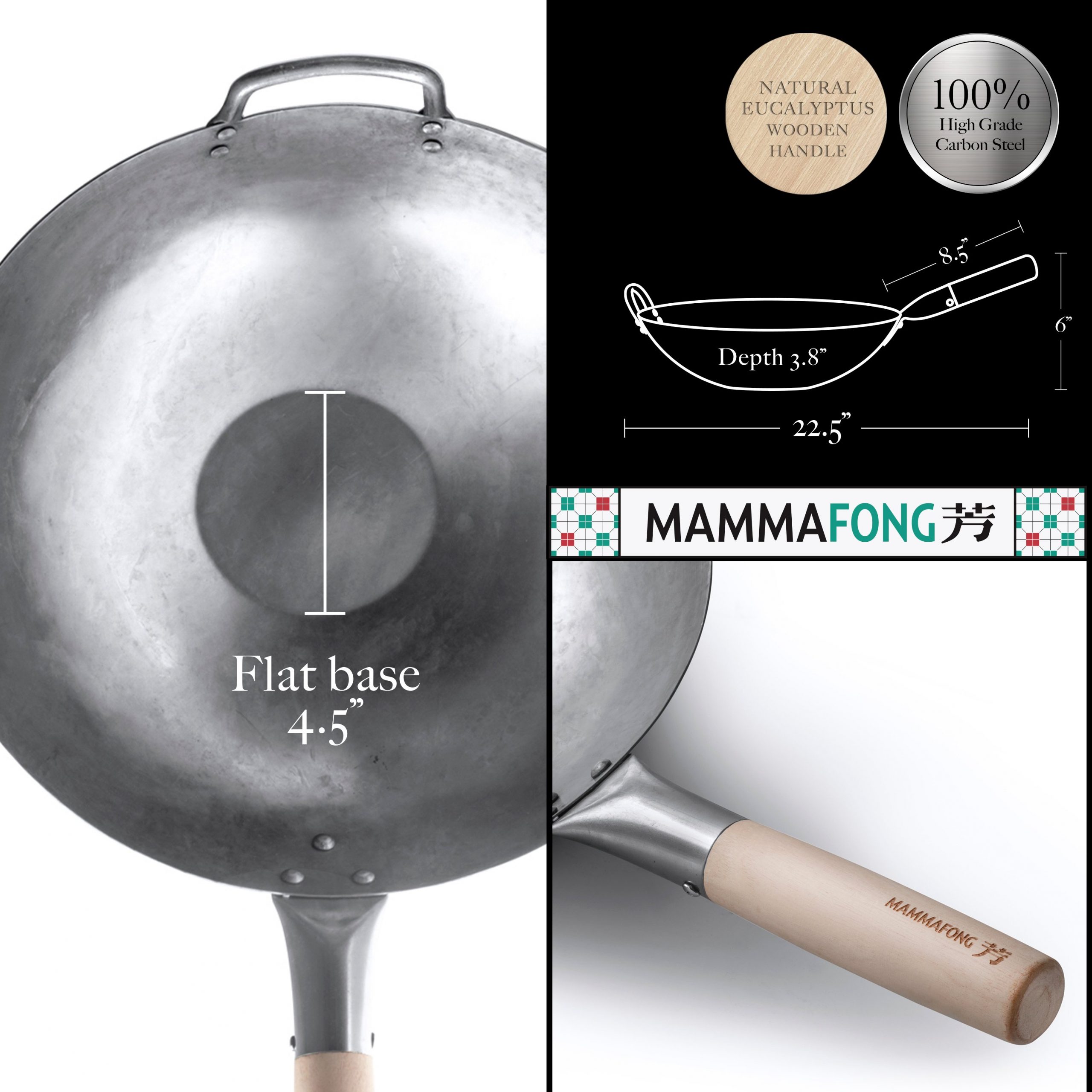
Do you need a lid?
Advice: yes!
Why? Simply it makes you life easier! A lot of time the ingredients need to simmer and be covered during cooking (especially for Chinese style meals). We strongly recommend a lid, as one of our friends puts it: “a lid is small revenue for the manufacturer, but giant leap for me in the kitchen”.![]()
